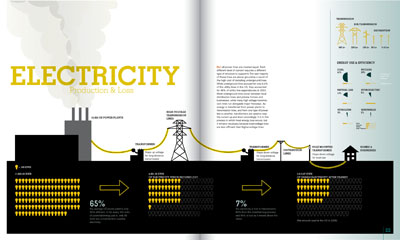
Sep '08 - Feb '10
Since I am starting this blog at the beginning of my second year of school, I wanted to recap my first year and explain the structure of the program I am in. I had envisioned that as one post, but have now decided to do a separate post for each quarter, because apparently I’ve been quite busy. Graduate courseload typically consists of 3 classes per quarter. One of these is a graduate “seminar” which frequently is half-seminar, half-studio; the other two are chosen by the student each quarter but typically one of them is a junior or senior level undergraduate studio and the other slot is used on art history classes, theory, or electives from other schools. The studio structure is a bit unusual, but it allows all of those in our small program (only 6 people in my year, I think 5 new students joining us in the fall) to pursue our very diverse interests without the faculty overstretching themselves. There are things about this that I don’t particularly love, but I do my best to work around them. In general the graduate students are expected to work at a higher theoretical level in these classes, but we are responsible for raising that bar ourselves, so it is common to see work for these courses pinned up around the graduate studio- red pen marks and sticky notes appear within hours as we critique each other whenever we find the time, to try to keep the level of work high.
Anyway, after talking with my advisor it was strongly recommended that I enroll in the junior level Typography course in the fall. I found that there were too many studios in the fall that I wanted to take- not satisfied with Typography, I also wanted to take Information Design, Visualizations, and Publication Design. Of course Typography was a pre-requisite for most of these senior level classes, but the great thing about being a graduate student is that you can do pretty much whatever you are capable of. So I enrolled in Typography and Information Design at the same time, which was both a blessing and a curse. It was very difficult to make it through Information Design without strong type skills, but at the same time this more intense start to my program has really helped me dive right into learning new things and has kept my work at a higher level than if I had only been enrolled in a junior level studio. I felt a big difference in the level of critique present between the junior and senior level studios, which definitely resulted in a lesser learning experience for me. I’ll talk about this more in a later post, but this difference has definitely lead me to adjust my scheduling of future courseloads.
In the end I was not very proud of my work in Typography, though what I learned there positively affected all of my other work. On the other hand, my Information Design project on visualizing energy loss in the U.S. electrical grid actually made it to the final round of a competition which I had no expectation of doing well in. Entering was a requirement of the class, and I am the first to admit that some of the other students submitted better-looking work than mine, so I can only hope and assume that the judges saw something conceptually interesting in my work which made them take note. On that note, here is the project, which was a three-spread magazine layout:


I thought I knew how to diagram when I got out of architecture school, but I have to say that if you go somewhere that offers an Information Design course, TAKE IT. I feel like I could go back and blow some architecture professors away with fabulous diagrams now that I never would have thought of or had the skill to execute at the time.
In the graduate seminar, I worked on a series of political posters which explored the representation of candidates ideas instead of their images, which I think remains some of my better work. I went through a ton of variations on this project and in the end came up with a very minimal solution that was very effective. I also learned that one of the best places to get critique is when waiting for your work to come out of the print lab- the initial reactions of other students from the VCD, ID, and fine arts programs can be very enlightening, and in this case were just what I had been going for. We also did a lot of reading on the role of design and designers in society. It was easy to come out of this course feeling very altruistic and also very full of one’s self, but it’s important to remember that we can’t all save the world all of the time, though saving something some of the time is worth striving for.
The final component of my first quarter was working as a TA Intern for the sophomore Design History class. This was a really enlightening experience for me as I was in a great position to notice parallels and deviations from the architectural history I had learned in undergrad. The TA Intern program is a really interesting one, in which design students have to work as a sort of junior TA under a full TA for course credit in their first or second quarter, before we can be “real” TAs. This quarter is our opportunity to develop some teaching skills before we are rudely turned loose on masses of poor undergraduate students. I had NO IDEA how much work goes into a class like this! Every week there were meetings among the TAs and our professor, there were test questions to be written, tests and papers to be graded, lectures to be prepared… oh, and readings to keep up with. it never ended. Each of us were supposed to work approximately 20 hours per week on the class, but I am sure it came out to considerably more than that.
Looking back on that quarter, I wish I had approached it more humbly in the beginning, taken critique better, and pushed myself harder in that type class, but I think it’s all managed to work out. While writing this post, it occurs to me that if I could develop a course on my own it might be Information Design for Architects, so it seems that there was some synergy with the various activities going on that quarter, even if I didn’t realize it at the time, and maybe my attention was just where it needed to be, with the higher level projects, and of course with the students.



2 Comments
Nice spread...
yeah great stuff!
Block this user
Are you sure you want to block this user and hide all related comments throughout the site?
Archinect
This is your first comment on Archinect. Your comment will be visible once approved.